Tuesday Triage #81
- TUESDAY TRIAGE #81 by Vadim Drobinin
- On some fishy business
- Things I enjoyed reading
- 1. A History of Haggis by Alexander Lee
- 2. Origami and the Structure of Materials by Huan Liu et al
- 3. The secret of Arctic 'survival parenting' by Suvi Pilvi King
- 4. Ulysses at 100: the birth of the modern by Colm Tóibín
- 5. Six architects on their dream desks by Roz Barr et al
- 6. Parsnip Cakes to Fry by @rare_cooking
- 7. The Kept and the Killed by Erica X Eisen
- 8. Stop brainstorming by @ilikescience
- 9. Xcode through the years by Cory Bohon
- 10. Rebuilding Notre Dame, Painstaking Battle Between New and Old by Carol A. Seidl
- Things I didn't know last Tuesday
- 1. MariaDB
- 2. Wakashu
- 3. Aspartame hydrolysis
- 4. Why Chart Increasing emoji is red
- 5. Jersey kale
- 6. Simnel cake
- 7. Why skyscrapers are so short
- 8. Sooragh
- 9. Why McDonald's stopped serving Heinz ketchup
- 10. Tulumba
- Book of the week
- Thank you and see you in a week!
TUESDAY TRIAGE #81
by Vadim Drobinin ¶
Your weekly crème de la crème of the Internet is here!
01.02.2022 (read in browser)
-
Intro
Whatever is on my mind this week. -
Things I enjoyed reading
Ten-ish articles I found worth reading. -
Things I didn't know last Tuesday
Ten-ish facts I didn't know when I wrote the previous edition. -
Book of the week
Some thoughts on the latest book I've read.
On some fishy business ¶
This week I spent quite some time dealing with fish. It started as a simple affair: cure a few pieces, hot smoke another one, and turn leftovers into a chowder.
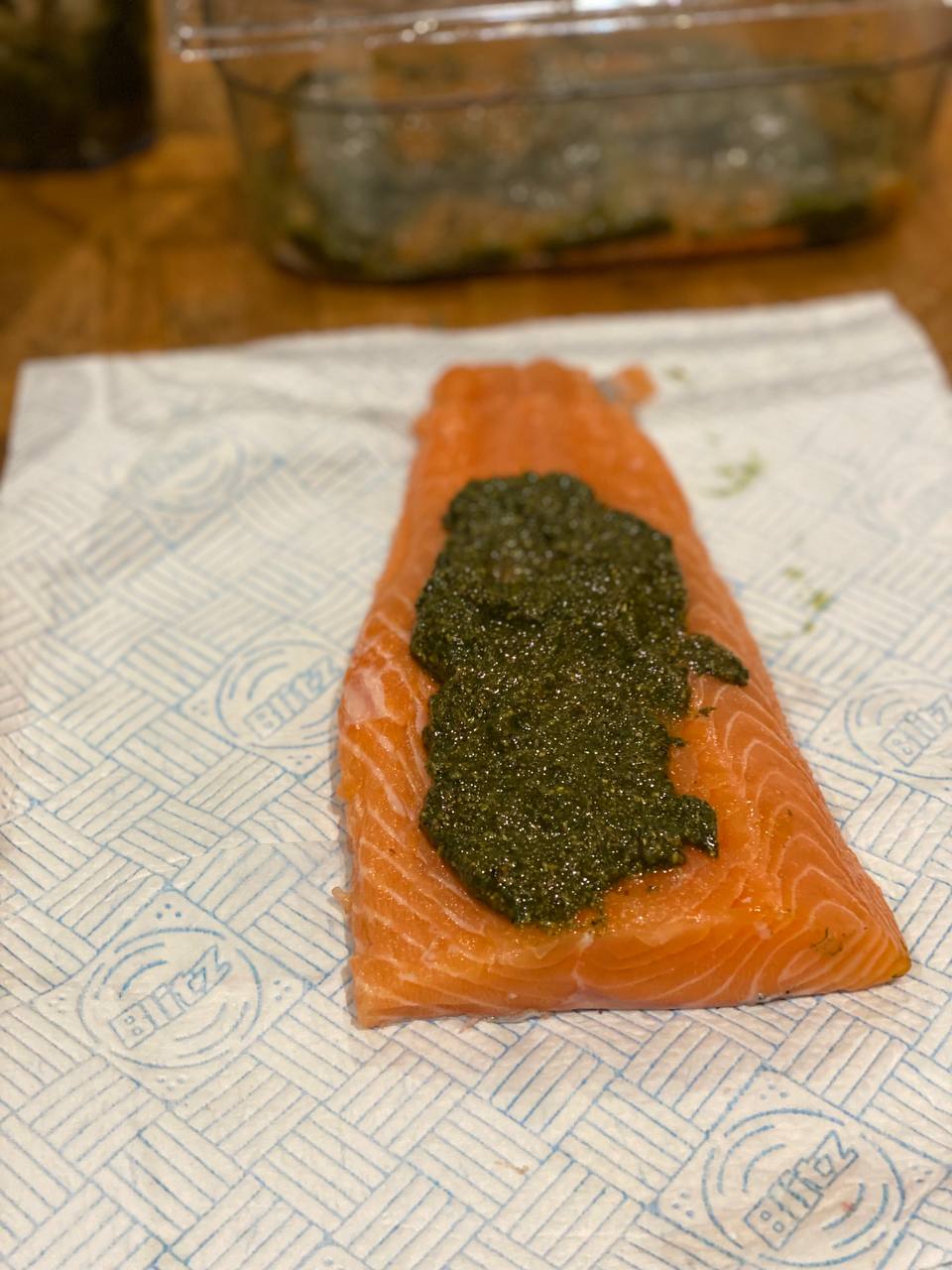
I am still trying to find that one perfect recipe, so despite making a classic piece of gravlax first, I also did a quick cure on some thin pieces (it got too salty to my liking, probably calls for a coarser salt).
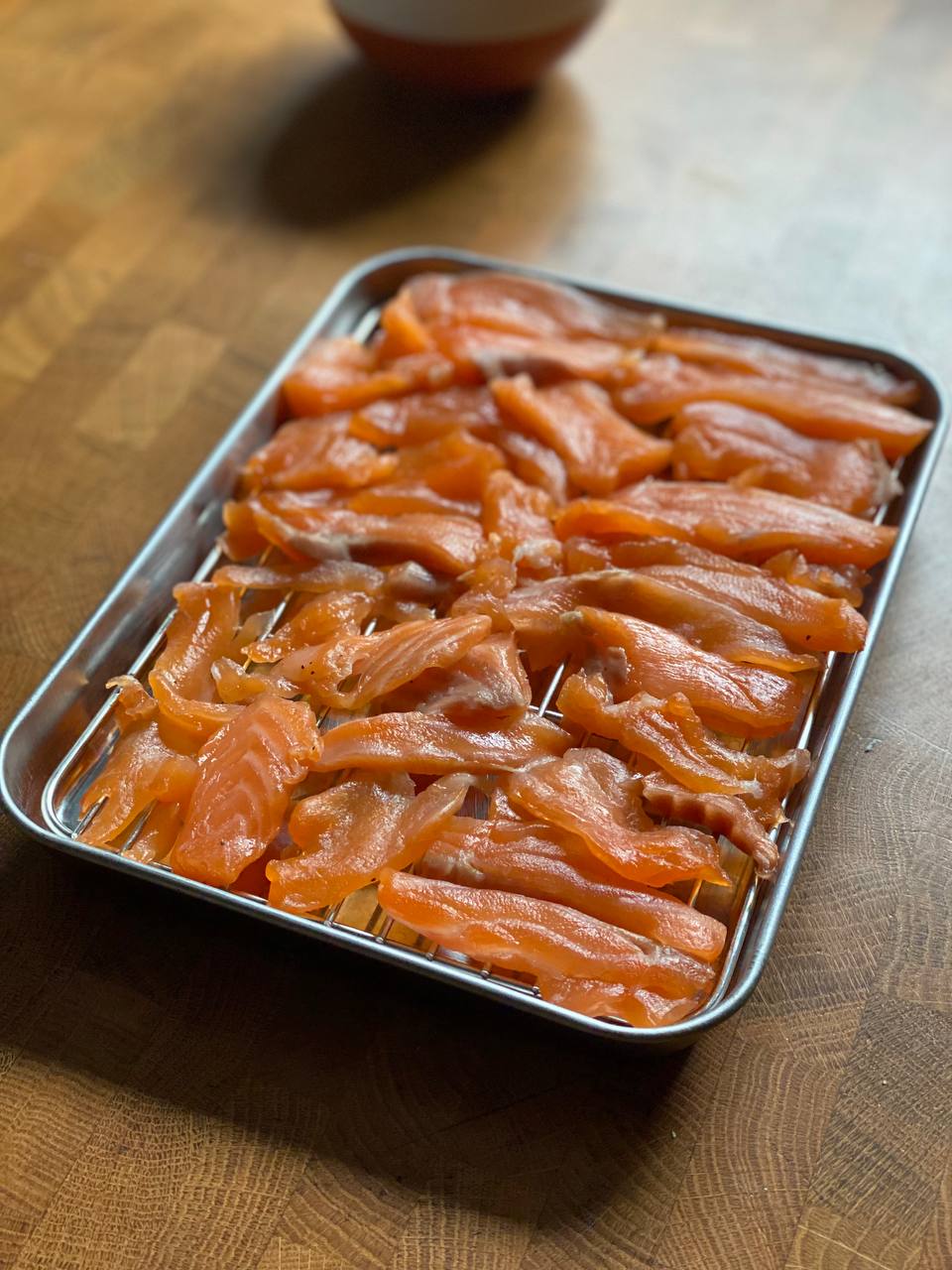
Another fillet went into brine for the night:
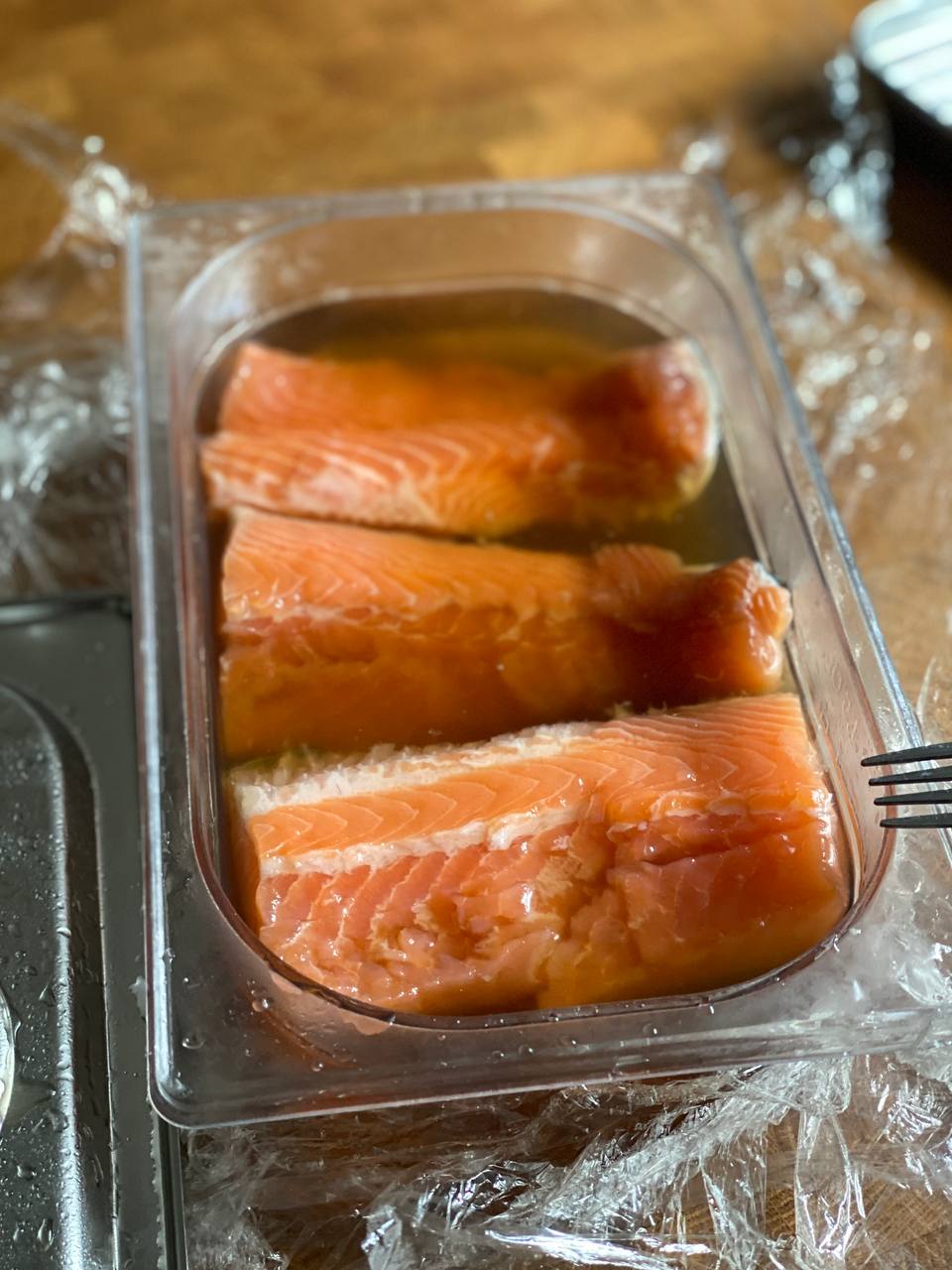
And then got hot smoked the day later. I am pretty happy with the results but it feels like there is still way more to learn about the tools I have (namely, a single BBQ which wasn't built for smoking).
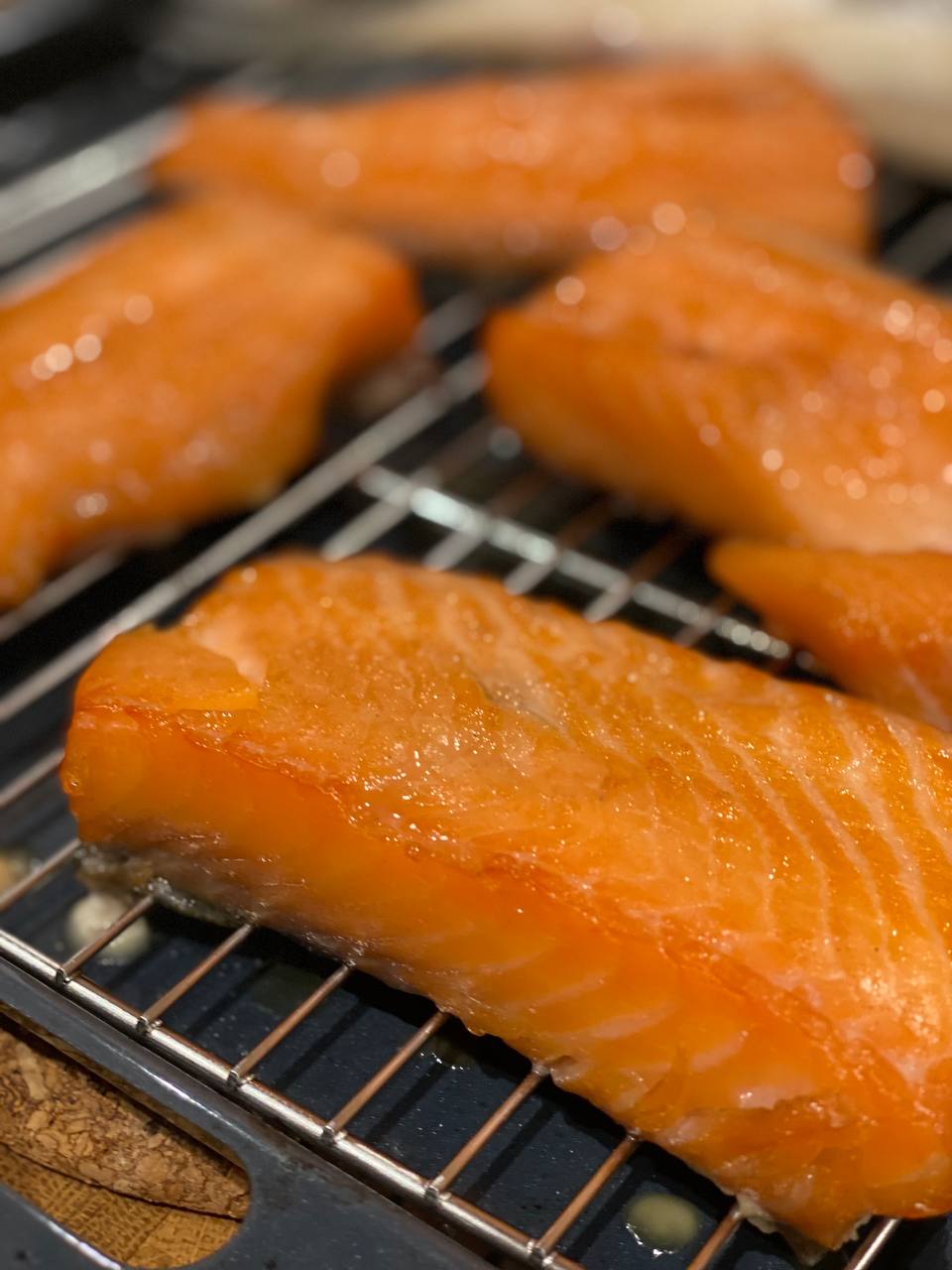
Instead of the chowder I decided to try something more ambitious and make fish sausages. I had some fish patties in my childhood, and hated them, but sausages are probably a different story.
This is just a very basic blend of salmon trimmings (mostly the fatty parts from the belly) and a bit of white fish (plaice in my case), as well as a bunch of spices, breadcrumbs, olive oil, and cold water.
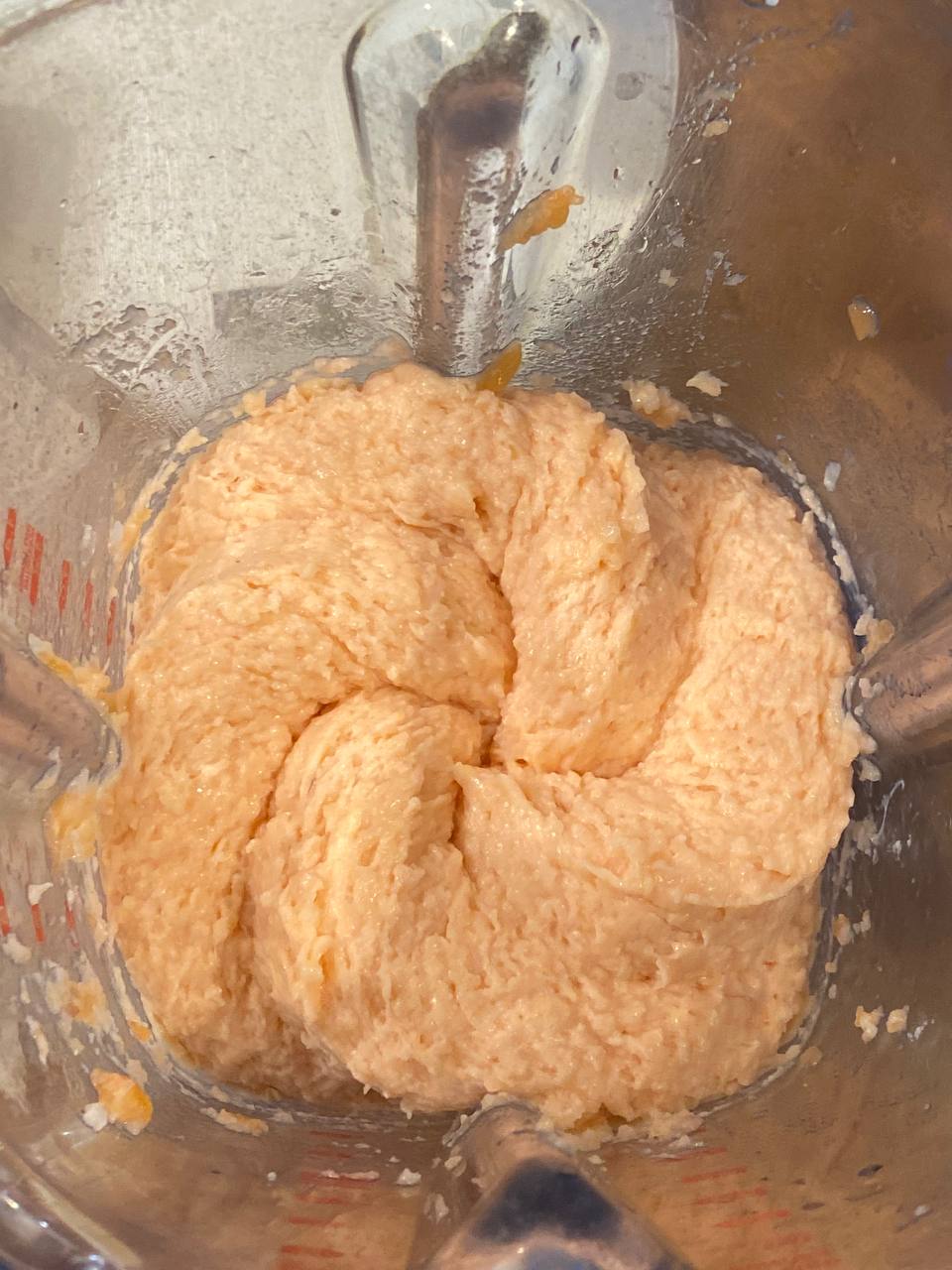
I got it mixed with some more plaice fillets (to make sure there is some texture to the sausage), and kept in the fridge overnight to let the flavours mellow through.
And that's actually the worrying part: salmon is not meant to be stored for more than a few days in the fridge, and my slices were lying there for four nights (albeit in a softly vacuumed bag). It smelled alright though, and the fifth night was in the mixture with 2% of salt by weight, so I am not worried about that.
For the sake of storage though I rolled the sausages without casings and froze them straightaway to cook as needed (first in boiling water to maintain the shape, then on a grill / in a smoker to finish).
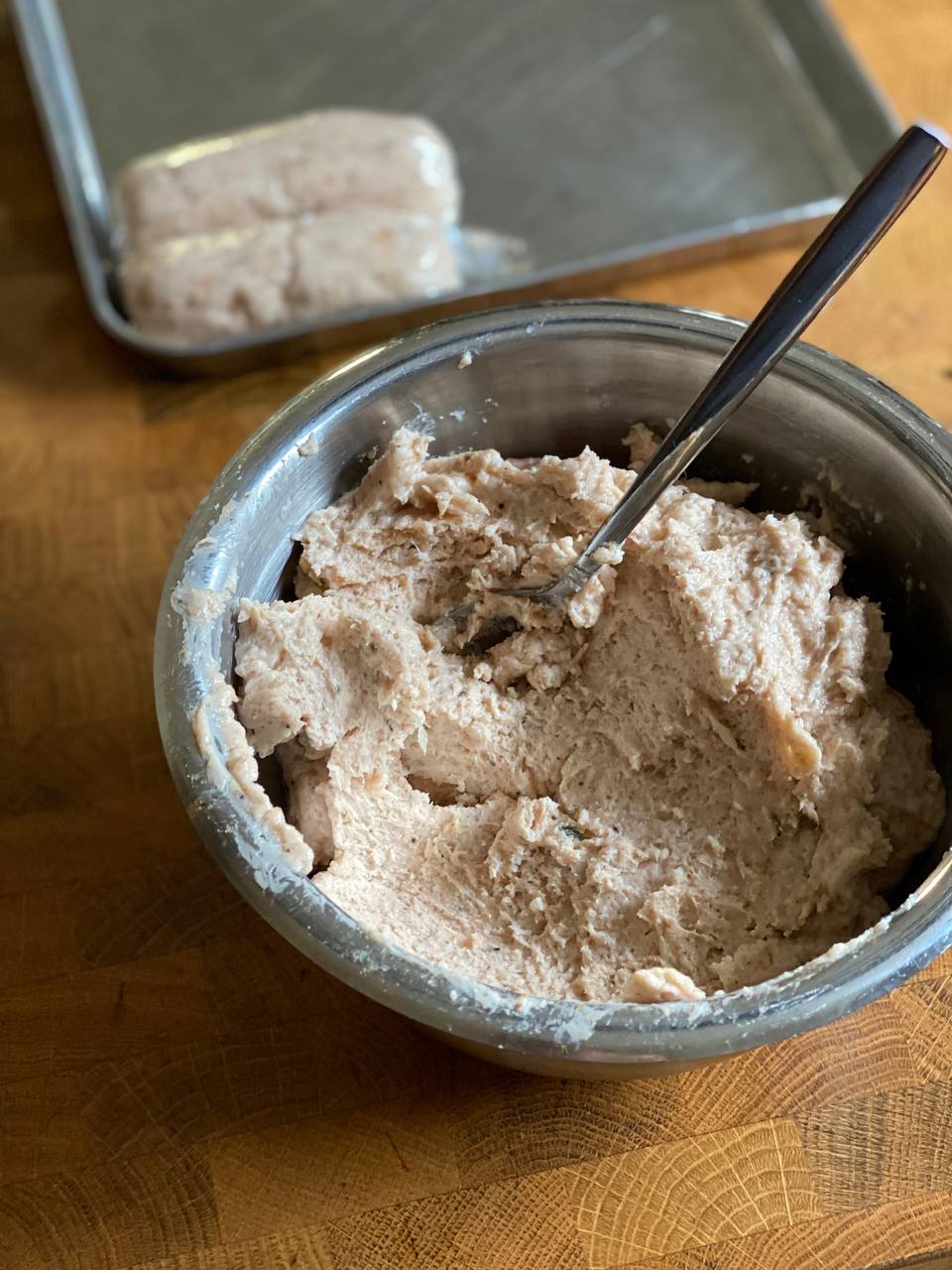
And just to wrap things up, I am still trying out different eclair-making techniques. This time the dough was frozen before baking, so it was very easy to handle but I am not completely happy with the spring.
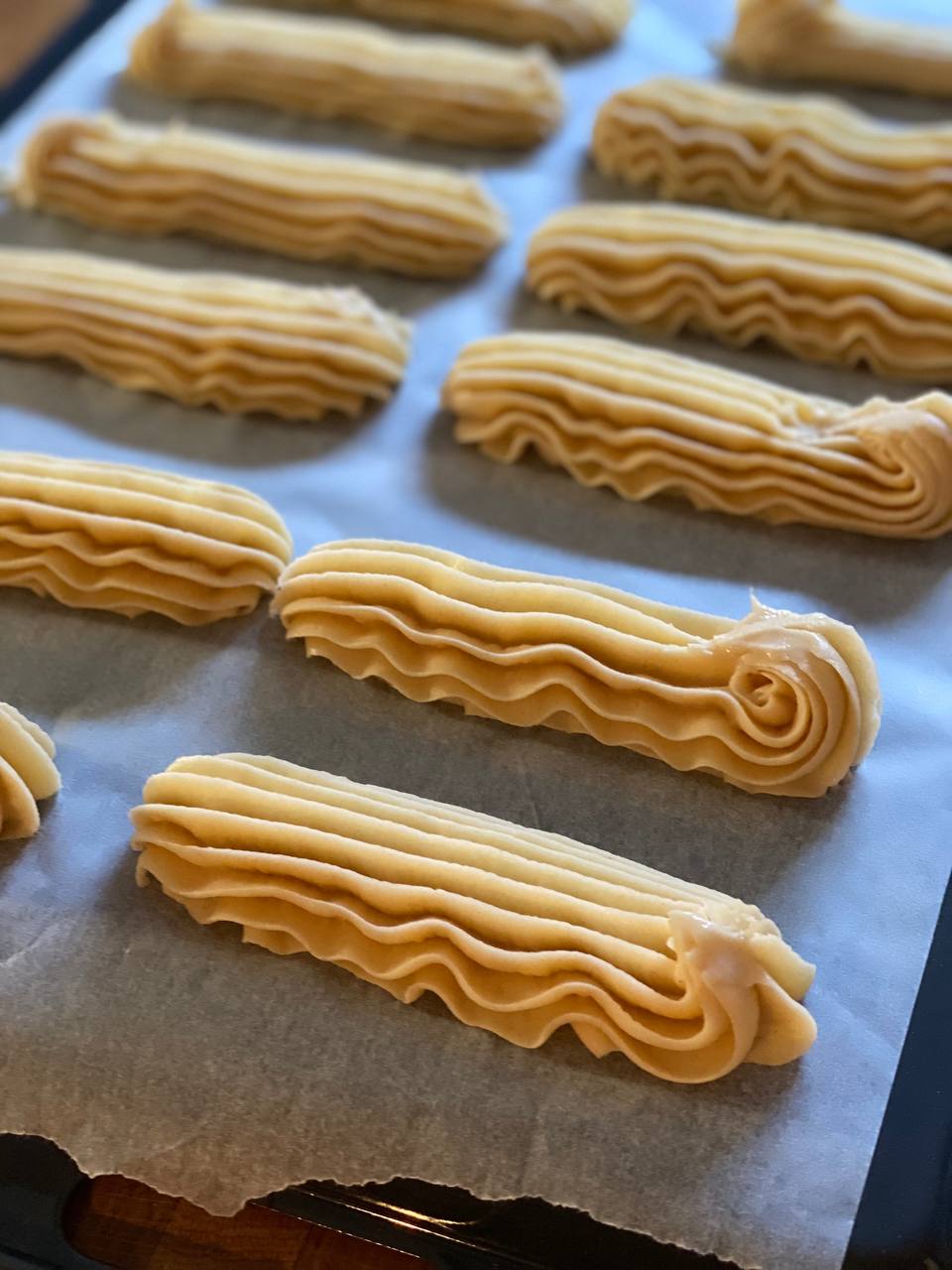
Among the fillings there were vanilla and matcha ones:
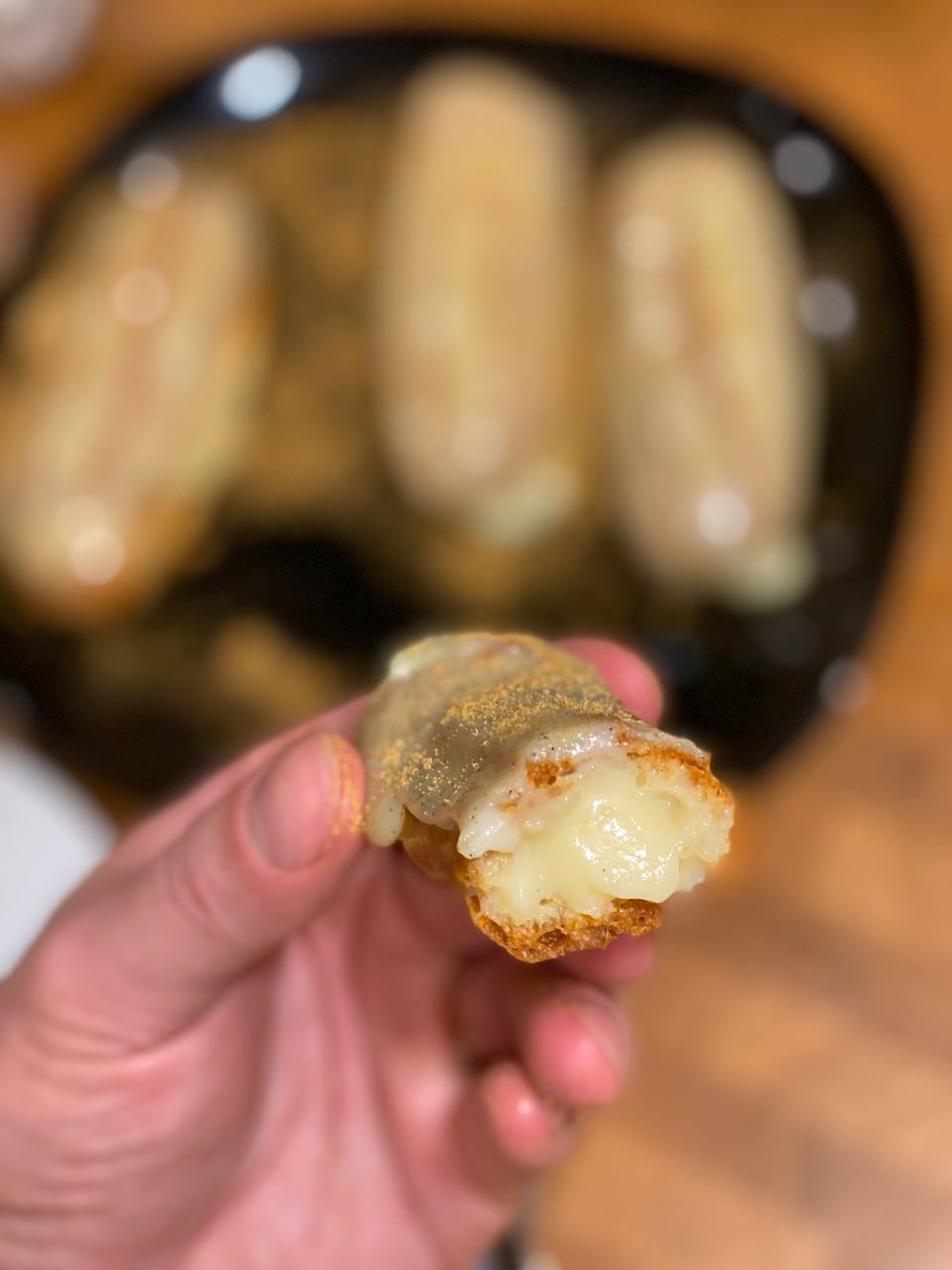
Also chestnuts-gingerbread:
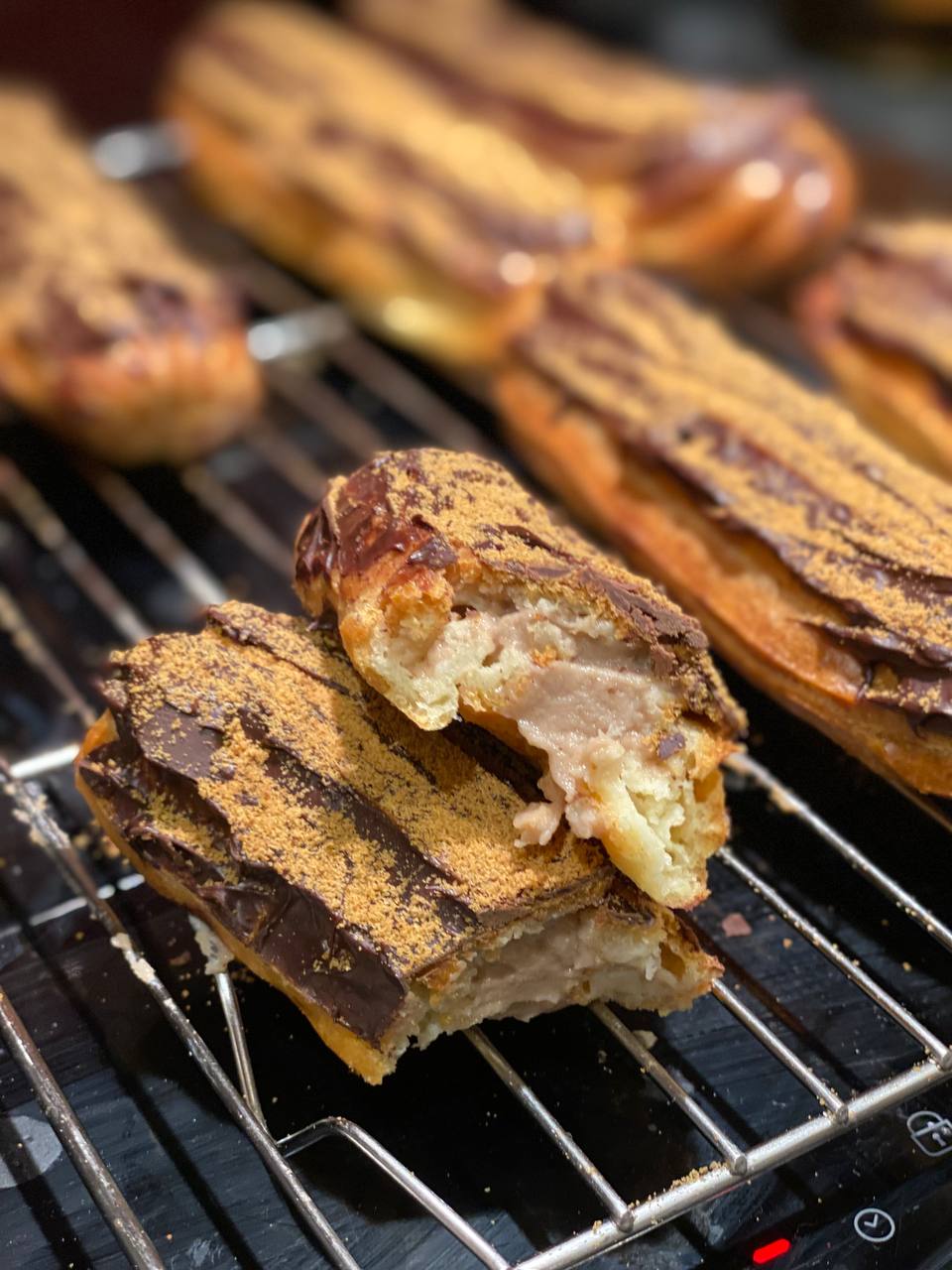
Vanilla was probably the most successful one (matcha got too runny to stay in the shells, and chestnuts had a very mellow flavour). I also froze some dough to see how it'd behave in a month or so.
Things I enjoyed reading ¶
1. A History of Haggis by Alexander Lee ¶
A fascinating read into the myths and stories behind one of the most signature Scottish dishes.
We should, however, be careful of reading too much into these texts. That they all come from England does not necessarily mean that haggis was invented in England – or that it was unknown elsewhere in the British Isles. Given that a further recipe is found in the Liber cure cocorum, produced in Lancashire at some point in the mid-15th century, there can be no doubt that it was eaten in the north of England; and since the ‘border’ with Scotland was then rather fluid, it is not inconceivable that it was also enjoyed north of the Tweed.
I still hope to making haggis myself one day, but now looking at its history I might as well start with some variations on the topic.
2. Origami and the Structure of Materials by Huan Liu et al ¶
A research into the science behind paper folding and its potential uses for pretty much anything, from new materials to building houses.
But in origami design, we usually wish to find the particular parameterization that actually describes the origami structure, which we often fold from a flat sheet with a crease pattern. Ideally, we want the full recipe for the sheet’s continuous folding—a homotopy, if it exists—to guarantee that the structure is deployable. A Lagrangian approach is therefore fruitful, especially if we also seek to calculate the forces and moments that contribute to the folding.
I am pretty sure that I understood only the main concepts of the article but there are plenty of references for those more well-versed than I am.
3. The secret of Arctic 'survival parenting' by Suvi Pilvi King ¶
I always suspected that an environment is as important for one's development as anything else, and this article pretty much confirms it by the example of people adjusting their parenting approaches based on the world around.
The earmarking process takes several weeks and is only carried out at night, when it is still bright but cooler than during the day. This makes it less stressful for the reindeer and their calves. To be able to carry out the work together, the entire family switches sleep cycles, reversing night and day. Children are up and awake working and playing all night, for weeks at a time, together with their extended families and fellow herders. They nap during the day, curling up and dozing off whenever they feel like it.
There are quite a few ideas in there, most of them seem applicable even if you don't live in the Arctic.
4. Ulysses at 100: the birth of the modern by Colm Tóibín ¶
Ulysses is one of the very few books I didn't finish despite really willing to. It's just I still don't believe I have what it takes to understand the references.
I am also not a huge fan of editions with someone's references: that's an offence to the writer in my mind, unless you are an Oxford scholar writing a thesis.
One year, being busy, I forgot it was Bloomsday. I found myself outside a city-centre supermarket with two bags of groceries being accosted by a large group of Joyceans, all dressed up. They asked me what character in the book I was playing. I told them I was no one at all, just an ordinary man in a city on an ordinary day. And we agreed finally that this was fully in the spirit of Joyce’s great novel.
Maybe one day I will relate to that too.
5. Six architects on their dream desks by Roz Barr et al ¶
If you were to design the most convenient desk for yourself, how would it look like? Mine probably would be virtual, but there are other options:
On it, laptop obviously. A few books I need at hand propped up on one end. Maybe a vase with flowers and some postcards standing against it, and a couple of display objects. Maybe some old nineteenth-century building tools, like a tape measure and a couple of moulds. Ideally it would be kept nice and neat, but in reality I would have printouts, books and papers all over the place. And coffee cups.
Would be nice to see a similar series but on other things. Chefs talking about their dream ovens, bartenders dreaming of barspoons, programmers imagining perfect debugging ducks...
6. Parsnip Cakes to Fry by @rare_cooking ¶
I had my share of courgette pancakes in my childhood, and apparently the British alternative would be a parsnip cake:
I love parsnips. Needless to say, I was thrilled when I saw a recipe for “Parsnip Cakes to Fry” in Margarett Greene’s recipe book (f MS.1980.004), dated 1701, now held in the Clark Library collections. Somewhere between a starchy pancake and a fritter, these make a wonderful side for any roast dinner or hearty vegetarian meal.
The recipe is actually reconstructed, so as authentic as it gets. I've been casually looking for some old cooking book to add to my collection, and being able to see the orginal recipes is one of the main reasons (even if they end up to be imperfect, they still tell a story).
7. The Kept and the Killed by Erica X Eisen ¶
An unusual way to prevent a photo from being printed, and a great research into some of those photographs that didn't make it to the public:
Yet despite the File’s colossal scope, there were still images that Stryker deemed unfit for inclusion. These photographs had to be, in his parlance, “killed” — marked for exclusion, usually with a merciless hole-punch through the middle. By the time the project came to a close, the FSA’s photographers had captured some 270,000 images, of which a staggering 100,000 were killed.
Probably a few more years, and neural networks would be capable of filling the void by whatever is missing. Must be a simple task when it comes to landscapes (I know that it's not only landscapes)?
8. Stop brainstorming by @ilikescience ¶
I really like this counterintuitive argument against meaningless brainstorming sessions.
Brainstorming has become a heuristic, an attempted shortcut, a lossy substitution for psychological safety. Osborn’s encouragement during the brainstorm signaled psychological safety, giving his team what they needed to be creative even after they left the room. But simply putting a bunch of people on a Zoom call and saying “there are no bad ideas” won’t create a sense of safety where none existed before.
It's very easy to abuse the very concept of sharing ideas without moderation, and yet so many people try to put constraints on those sessions and kill whatever sense of safety was present.
9. Xcode through the years by Cory Bohon ¶
A moment of nostalgia for those who dealt (or is dealing) with Xcode:
This was another groundbreaking step for Apple: No other company offered an IDE that would allow developers to create apps for both their main platform and a mobile platform using the same toolchain. Desktop-class mobile software had never even been thought about before due to software and hardware limitations, but Apple had done it, and soon the floodgates would open.
I quite enjoyed skimming through photos: my first exposure to Xcode was after dealing with pretty much everything, from vim to Notepad++ to Eclipse to PyCharm, so I couldn't really complain.
10. Rebuilding Notre Dame, Painstaking Battle Between New and Old by Carol A. Seidl ¶
A look behind the curtains of one of the biggest restoration projects out there.
One unexpected finding was the use of massive iron staples. Concealed behind the stonework’s facade, these staples connected stones in the vault of the cathedral, reinforcing and strengthening the roof. Longer bands of iron were discovered at the tops of the cathedral’s walls and elsewhere. This revelation provoked a detailed scan of other structures. Using sophisticated metal detectors, scientists gradually identified an elaborate skeleton of iron buried within the walls and columns of Notre Dame.
I was lucky enough to see the cathedral before the fire, and understanding how it is actually constructed is a really interesting way to appreciate all the efforts put into it through the centuries.
Things I didn't know last Tuesday ¶
1. MariaDB ¶
A long time ago, in the 90s, Monty Widenius wrote the first version of MySQL.
He called it "My" not because it was his, but because it was the name of his first daughter.
The DB became very popular and eventually was sold for one billion dollars. At some point Monty forked the product (as it was open source) and decided to create a different version.
I just learnt that this different version is called MariaDB (yeah, guess how's his second daughter called) and it is heading to the market.
MariaDB Corporation Ab (“MariaDB”), one of the fastest growing and most popular open source database software companies in the world, announced today its intention to become a publicly listed company on the New York Stock Exchange (NYSE) [...]
I don't know any other billionare who made (and sold) something based on the same open source product twice, so that's pretty cool.
2. Wakashu ¶
Didn't know about that piece of the Japanese culture before:
Wakashu were, broadly speaking, male youths transitioning between being a child and an adult. But they were also more than just young men, occupying their own singular space with unique rules, conventions and, most crucially, their own style.

Although I am pretty sure something very similar (I guess from another country) was referenced at some point before.
3. Aspartame hydrolysis ¶
Did you ever find your Diet Coke tasting odd? The sweetener is the culprit:
So what happens? Well, the simplest thing that happens is that the two amino acids come upzipped: this is called hydrolysis, since it always amounts to adding a water molecule at a carbon-oxygen bond. If you unzip aspartame into the two amino acids and remove that methyl to become methanol, you have a tasteless mixture of pretty harmless compounds. Your body easily metabolizes that bit of methyl alcohol and you are none the worse for it.
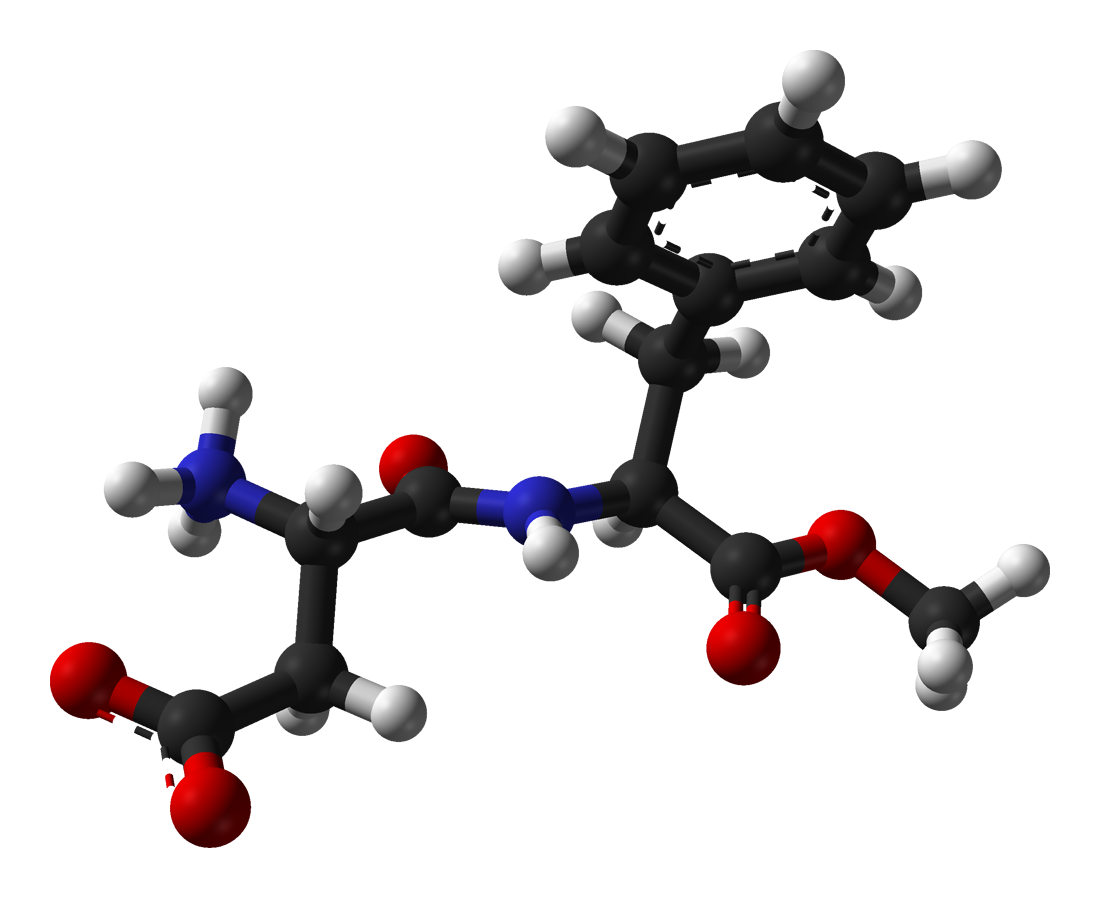
Now please explain me why Coke Zero turns flat the moment I add an ice cube to the glass?
4. Why Chart Increasing emoji is red ¶
I never thought that there is a relationship between Japan and Chart Increasing emoji (📈).
In Japan, the country where the first emoji sets originated, red is traditionally used to represent increases in the value of a stock.
The irony is that my most viewed tweet is about the difference between green and red on different stock markets.
5. Jersey kale ¶
I am not a huge fan of kale, but if I were to grow one myself, it'd be this one:
Up until recently, 12-foot kale was a common sight on the island of Jersey. Dotted throughout the agricultural landscape, the plants dwarfed everything except for full-sized trees. They clumped in thickets between potato fields, served as posts for beans to twine around, and even formed living fences.

That's like bamboo, but kale!
6. Simnel cake ¶
A pretty cool way to decorate a cake, but also the filling must be really nice.
Simnel cake is a fruitcake widely eaten in the United Kingdom, Ireland and other countries with patterns of migration from them, associated with Lent and Easter. It is distinguished by layers of almond paste or marzipan, typically one in the middle and one on top, and a set of eleven balls made of the same paste.

Next time I see it on the menu I will know what to expect.
7. Why skyscrapers are so short ¶
This is a good question, but also the answer is one of those you could probably guess on your own:
The economic height of buildings is lower than what’s physically capable of being built, and once that economic height rises high enough we will start to see legal restrictions spring up that further limit building height.
As expected, it boils down to return on investment, and as we are not yet running out of the land there is not much point in building them too high.
8. Sooragh ¶
There are lots of things one could cook with clay, but I haven't see this one before:
Sooragh is a deep crimson sauce with a particular minerality that is native to the Hormozgan region, specifically to Hormuz, a 16-square-mile, teardrop-shaped island in the Persian gulf just five miles from the Iranian coast. The sauce’s main ingredient is گِلَک (romanized: gelak), or the edible red earth, a soil on Hormuz’s surface.
The sauce is also added to breads and other dishes, so it has many uses.
9. Why McDonald's stopped serving Heinz ketchup ¶
I am not an often guest at McDonald's but I remember their Heinz sauce tabs well. At some point I thought that it's a cultural difference and here in the UK they just have a different supplier but apparently the story is more interesting:
The world's biggest fast-food chain said it would drop the ketchup after Bernardo Hees, the former head of rival Burger King, took over as Heinz's chief executive.
Obviously that'd not be the single reason, and there are more examples where McDonald's weren't happy with Heinz decisions (e.g preferring to sell to groceries as that's where the revenue streams are better).
10. Tulumba ¶
As I was making eclairs, this must be the next logical step:
Tulumba [...] is a deep-fried dessert found in Turkey and the regional cuisines of the former Ottoman Empire. It is a fried batter soaked in syrup, similar to jalebis and churros.

I mean, if people deep-fry their Mars bars, why wouldn't I deep-fry an eclair?
Book of the week ¶
I've been trying to find the right recipes for pickles and cured fish for quite a while now (and also had a few attempts at making cured meats and sausages), so every book on proper handling of both tools and ingredients definitely catches my attention.
So I was quite surprise to come across Salt Smoke Time by Will Horowitz just to realise that somehow I totally missed it.
“These days the role of the chef is as much a storyteller as anything else. We’re connecting the dots between the farmer and the consumer. These same ideas can be applied even without the restaurant or supplier as a middleman. A household cook determined to shop from the local farmers’ market can use each ingredient and scrap to its utmost! Incredible and inexpensive feats can be accomplished with a little ingenuity and strategic, intentional scheduling. Our vision of “farm-to-table” may look like harvesting an ingredient and using it fresh for dinner that same night, but that’s only part of it; real farm-to-table living is choosing that fresh ingredient to pair with the pickles, cheeses, or cured meat from six months ago that’s just now coming into its own.”
It has a really nice structure: the author kicks in with technical drawings to organise a farm-to-table operation for any setup (from a large farm to a one-bedroom flat), and then without further ado proceeds to recipes on pickling, fermenting, smoking, preserving, and curing.
And while I probably would skip on some recipes for now (my wife might not approve smoking a whole sheep in our garden), there is definitely enough room to experiment with.
Who knows, maybe that's where I will find my perfect pickles recipe.
Thank you and see you in a week! ¶
If you have any questions, or want to suggest a link for the next newsletter, please drop me a message on Twitter or reply to this email.
Cheers! 🍸